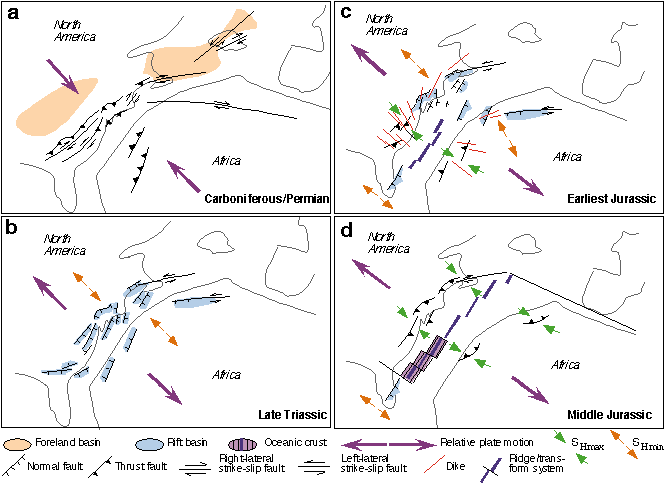| Figure 6: Simplified sketches showing Withjack et al.'s (1998) hypothesized tectonic evolution of eastern North America and northwestern Africa. (1) Supercontinental assembly was complete by Permian time (a). In Middle to Late Triassic time (b), all of eastern North America underwent NW-SE extension, manifested primarily in the formation and filling of half-graben basins. Prior to Early Jurassic time, the southern basins stopped subsiding. In earliest Jurassic time, the southern region experienced NW-SE shortening, resulting in the development of small-scale reverse faults, folds, and possible basin inversion as well as the intrusion of NW-striking diabase dikes; seafloor spreading began; coevally, the northern basins were actively extending in a NW-SE direction, resulting in the intrusion of NE-striking dikes and accelerated subsidence (c). By Middle Jurassic time, most of eastern North America was experiencing shortening, generally oriented NW-SE, which resulted in the development of small-scale reverse faults, folds, and basin inversion (d); seafloor spreading was now underway along most of the margin. [Modified from Withjack et al. (1998) and Schlische (1999).] |
 |